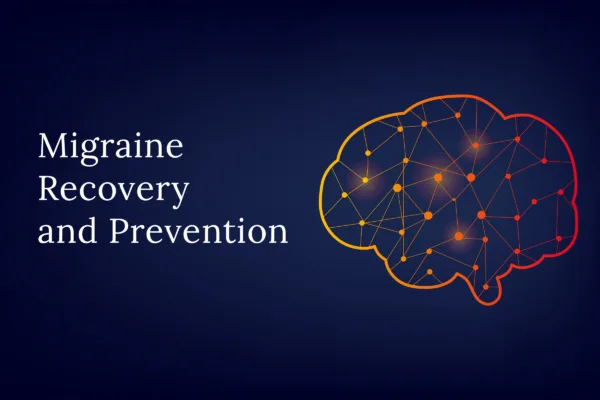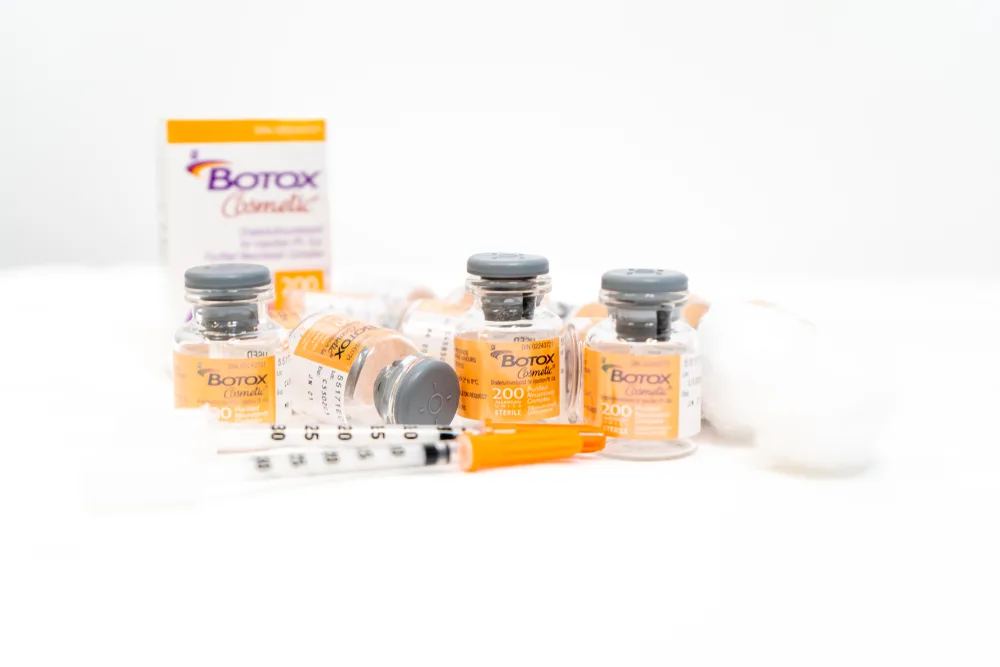If you’re a woman suffering from migraine headaches, you may have noticed a link between your migraines and your menstrual cycle, hormonal contraceptive use, or other hormonal changes. You’re not alone—research shows that over half of women with migraines experience a connection between the timing of their migraines and their hormone levels. These headaches can be disruptive and often feel like they come out of nowhere, but understanding the role hormones play can help you manage them more effectively.
What are Hormonal Headaches?
Hormonal migraines occur when changes in hormone levels—especially estrogen—trigger headaches. Hormone fluctuations during your menstrual cycle, pregnancy, menopause, or when using hormonal contraceptives can set off migraines. Scientific research shows that estrogen and progesterone influence how the brain processes pain signals and balances chemicals in the brain. A steady level of estrogen can help reduce migraine frequency, but sudden drops can trigger them.
How Common Are Hormonal Headaches in Women?
Migraines affect about 30% of women at some point in their lives and are three times more common in women than in men. Many women experience what is known as menstrual migraine attacks, which typically occur two or three days before or after the start of your period. These migraines are often more severe than other types, tend to last longer, and can even return the next day.
Hormonal Headaches and Menstrual Cycles
A menstrual migraine, sometimes called a “period headache,” typically occurs just before or during your period. These headaches are often more intense than regular migraines, causing throbbing pain, sensitivity to light, and nausea. You might also experience symptoms like dizziness, blurred vision, and extreme fatigue. The pain usually affects one side of the head and can move from one region to another, adding to the discomfort.
Why Do Hormonal Headaches Happen?
Menstrual migraines are triggered by the sudden drop in estrogen levels that occurs just before the start of your period. This decrease in estrogen can cause the migraine to begin two days before your period or up to three days after it starts. These hormone-triggered migraines tend to be more severe and longer-lasting than non-menstrual migraines.
What Causes Hormones to Trigger Headaches?
Hormonal fluctuations don’t just happen during your menstrual cycle. Major life events—such as pregnancy, menopause, or the use of hormonal contraceptives—can also impact your migraine patterns. Let’s take a closer look at these connections.
Hormonal Contraceptives
Hormonal contraceptives can both help and worsen migraines. For some women, contraceptives help regulate hormones and reduce the frequency of migraines. However, for others, hormonal contraceptives can trigger migraines, particularly during the last week of the pill cycle when hormone levels drop.
Pregnancy and Breastfeeding
Pregnancy causes significant hormonal shifts, especially in the first trimester, when estrogen levels rise rapidly. After childbirth, these levels drop quickly, which can trigger migraines. Other factors like stress, dehydration from morning sickness, and lack of sleep can make migraines worse during this time. Tracking your migraines throughout pregnancy is essential, as treatments need to be carefully considered for both you and your baby.
Perimenopause and Menopause
As women approach menopause, hormonal fluctuations can become more unpredictable, triggering more frequent and severe migraines. For some women, migraines may improve after menopause, while for others, they continue. Hormone replacement therapy (HRT) can help manage menopause-related migraines, though it may also trigger headaches in some cases.
Effective Treatments for Hormonal Headaches
Treating hormone-related migraines often involves a combination of lifestyle changes, medications, and, in some cases, hormone therapy. The best treatment plan will depend on your migraine frequency, severity, and individual health needs.
Lifestyle Modifications
Simple lifestyle adjustments can often help manage hormone-related migraines. These strategies can help reduce the likelihood of a migraine attack:
- Get adequate sleep: Ensure a consistent sleep schedule to help prevent migraines.
- Stay hydrated: Dehydration can be a major trigger, so drinking plenty of water is essential.
- Manage stress: Relaxation techniques like meditation, yoga, or breathing exercises can reduce stress-related migraines.
- Avoid known food triggers: Common culprits include alcohol, caffeine, aged cheese, and processed meats.
Medications
Several medications are available to treat hormone-related migraines, including:
- Nonsteroidal Anti-Inflammatory Drugs (NSAIDs): Medications like ibuprofen or naproxen can reduce pain when taken at the first sign of a migraine.
- Triptans: These are prescription medications that can treat migraines by narrowing blood vessels and blocking pain pathways in the brain.
- Hormone Therapy: For women with severe hormone-related migraines, hormone therapy may be an option. Estrogen supplements in the form of pills, gels, or patches can help stabilize hormone levels and reduce the frequency of migraines.
It’s important to consult your healthcare provider before starting any new treatment, especially if you’re pregnant, breastfeeding, or using hormonal contraceptives.
Alternative and Complementary Therapies
In addition to traditional treatments, some women find relief from alternative therapies such as:
Acupuncture: Regular sessions may help reduce migraine frequency by promoting relaxation and improving blood flow.
Biofeedback: This technique teaches you how to control physical responses like muscle tension and heart rate, which can help prevent migraines.
Mindfulness and Meditation: These practices can help manage stress and reduce the severity of migraines.
Tracking Your Migraines: The Power of a Migraine Diary
Understanding your migraine triggers is key to effective management. Keeping a migraine diary allows you to track when your migraines occur, their severity, duration, and what might be triggering them. Noticing patterns in relation to your menstrual cycle, diet, or stress levels can provide valuable insights and help your healthcare provider tailor a treatment plan specifically for you.
Conclusion
Hormonal migraines are a significant issue for many women, but the good news is that they can be managed effectively. By understanding how hormonal changes impact your body and using strategies like lifestyle adjustments, medication, and hormone therapy, you can take control of your migraine headaches.
Remember, what works for one woman may not work for another, so it’s important to find a treatment plan tailored to your needs. Tracking your migraines in relation to your menstrual cycle and other factors will provide critical insights that will help you and your doctor find the best way to manage your headaches.
References:
- https://www.nationalmigrainecentre.org.uk/
understanding-migraine/factsheets-and-resources/menstrual-migraine/ - https://www.ncbi.nlm.nih.gov/pmc/articles/
PMC3311830/ - https://www.ncbi.nlm.nih.gov/pmc/articles/
PMC9915903/ - https://www.healthline.com/health/
hormonal-headaches#causes - https://www.webmd.com/migraines-headaches/hormones-headaches


















